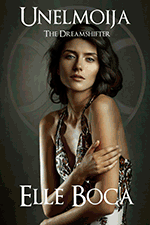by Editor | Jul 19, 2010 | Accomodations, New Articles
Article and photos by Josette King
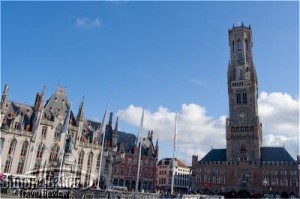
The Grote Markt is a favorite gathering spot with tourists
Bruges is unique; a city where time stood still at the height of its grandeur, half a millennium ago. Today, with most of its medieval architecture intact and its 430 hectare (1.6 square mile) historic center, it is one of Europe’s most picturesque cities; one that draws an estimated two million visitors a year, many of whom come for the day. European high-speed trains have put Bruges within an easy three-hours’ reach of Paris, Amsterdam, London, and the western part of Germany, allowing sightseers a quick look on their way from one capital city to the next.
These daytime tourists tend to congregate around the Grote Markt (Market Square), the grandest square and commercial heart of medieval Bruges since the thirteenth century, dominated by its 272 foot (83 meter) belfry, and the Burg (Town Square) that was, and remains, its administrative core. The cobbled streets surrounding the two squares are conveniently lined with shops brimming with the chocolate and lace for which the city is famous, ensuring that visitors do not have to stray far afield to make the most of their excursion.
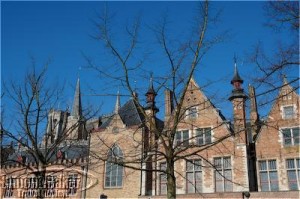
Gothic mansions in the morning sun
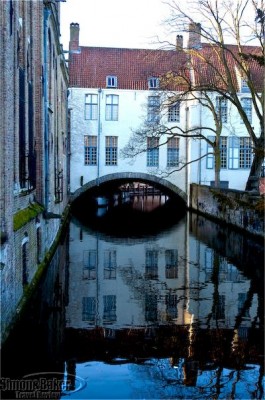
A medieval home mirrored in an ancient canal

The Beguinage is a serene retreat at the edge of the city
But a few minutes’ walk away in any direction, the true romance of Bruges unfolds. It becomes an uncrowded, magical medieval place where time references fade away. That is the Bruges which has drawn me back several times over the decades, to leisurely wander in a world unchanged for centuries. Regal swans glide by canal-side homes and humpbacked stone bridges lead into mazes of narrow streets opening onto squares bordered by stately Gothic mansions, or culs-de-sac surrounded with whitewashed almshouses. There are always surprises, previously overlooked gems to be discovered.
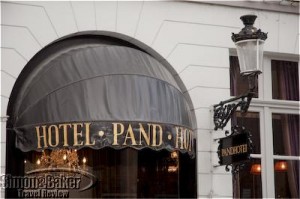
The Romantik Pand Hotel was a welcoming haven of luxury
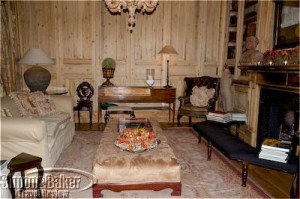
The library at the Romantik Pand Hotel

My suite overlooked the medieval skyline
On my recent visit one such jewel was the Romantik Pand Hotel, an early eighteenth century carriage house on a tiny tree-shaded square in the heart of the historic center. Owned and managed by the Vanhaecke family, the property had been lovingly transformed into a luxury boutique hotel. Personally decorated by Mrs. Chris Vanhaeke, an enthusiastic antiques collector, with superb pieces from her collection, it had the authentic feel of a gracious home from a bygone era (with the welcome addition of a whirlpool bath and WiFi Internet access in my suite).
The pleasure of my visit was further enhanced by the genuinely thoughtful hospitality of the management and staff, and the sense that no detail had been overlooked to ensure that I would feel truly at home during my visit with them. In fact, as I look back on my stay at the Romantik Pand Hotel, I suspect it may have altered the way I will think of future visits to Bruges. From now on, it will probably start with a yearning to return to the Pand, with the added bonus that it sits in the heart of one of the most romantic cities in Europe. Click here to read more about my visit to Bruges and my stay at the Romantik Pand Hotel.
by Editor | Jul 12, 2010 | Accomodations, New Articles
Photos by Gary Cox
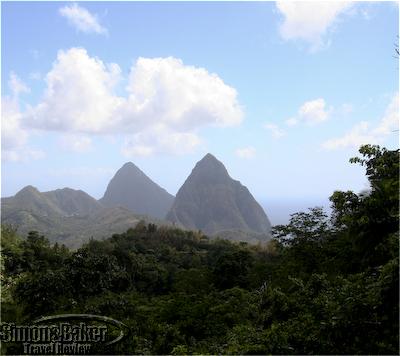
The distinctive Saint Lucia Pitons
Mention of any Caribbean island conjures images of white sand beaches, luxurious hideaways, tropical drinks, and exotic meals. One of the islands many landlubbers dream about is Saint Lucia which one of our teams visited earlier this year on a mission to discover the former British colony’s charms. Located in the eastern Caribbean between Martinique, a French island, and Saint Vincent, part of Saint Vincent and the Grenadines, Saint Lucia is recognized often thanks to two distinctive hills called Pitons. It is also known for its active volcano, lush mountainous landscape and more recently for its vibrant tourism development. Read about their experience in Saint Lucia at The Jalousie Plantation and the Cotton Bay Club, the two hotels they stayed in while on the island.
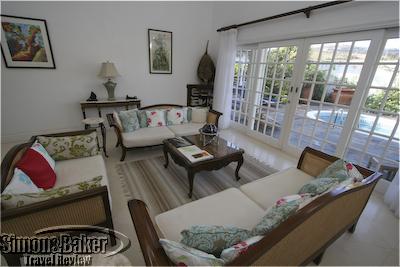
The living room in Villa 45 at Cotton Bay Village

The Jalousie Plantation beach and pool areas

A beautiful hummingbird visiting the flowers in Saint Lucia
by Editor | Jun 28, 2010 | Accomodations, New Articles
Photos by Juan Cooper
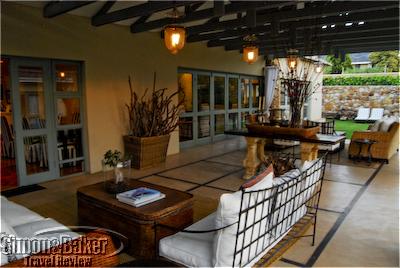
One of the common areas at The Parkwood

A bathroom at The Parkwood
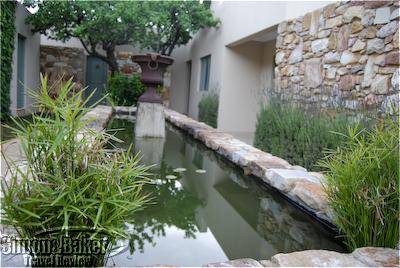
One of the water features at the Johannesburg hotel
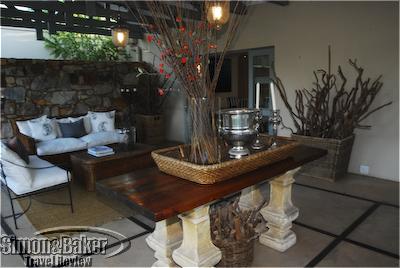
A quiet corner for a meeting

The living area in one of The Parkwood suites
During a visit to South Africa one of our teams stayed at The Parkwood Guest Lodge, a 16-room luxury oriented property within an upscale Johannesburg neighborhood. They appreciated the property’s quiet ambiance, comfort and luxury oriented suites and the hotel’s location within easy reach of restaurants and shopping centers. Click here to read about their stay at The Parkwood Guest Lodge
by Editor | Jun 14, 2010 | Accomodations, Ecotourism, Luxury Travel, New Articles
Photos by Gary Cox
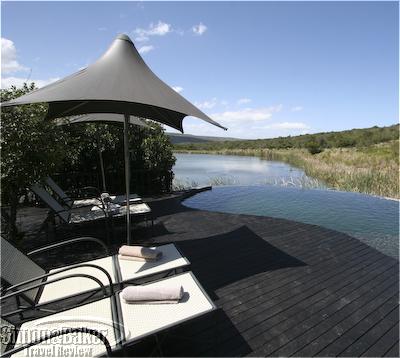
The Kichaka pool and water hole
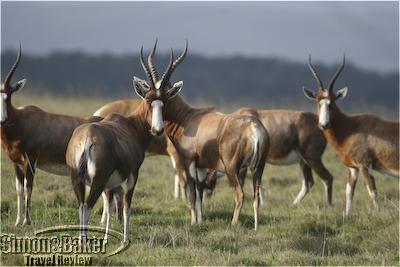
There were two daily game drives at Kichaka
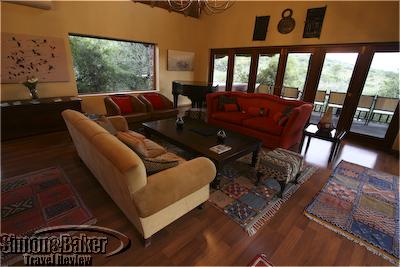
A common area at Kichaka


There was game viewing of the small and large varieties at the lodge
Kichaka, an Eastern Cape, South Africa luxury game viewing lodge with 10 suites, offered visitors to the region excellent meals, luxurious suites with lots of privacy and twice daily game drives. Elena and Gary thought it was a great place for a romantic getaway and for visitors to South Africa’s Wine Route wishing to get a taste of game viewing in a luxury environment. Click here to read our team’s detailed article about the Kichaka Luxury Game Lodge.
by Editor | May 24, 2010 | Accomodations, Ecotourism
Photos by Gary Cox

A welcome sign
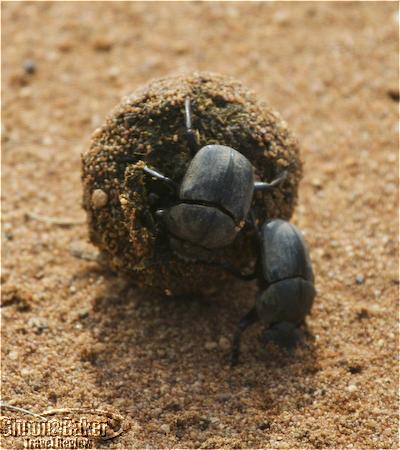
Dung beetles
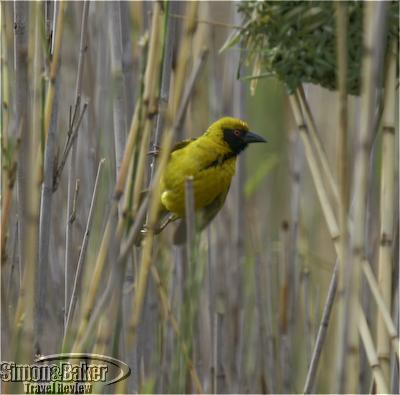
Bird spotting and identification was a common way to enjoy game drives
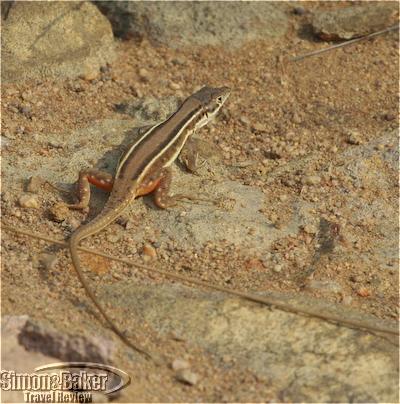
At Jembisa there was time to observe the little creatures too
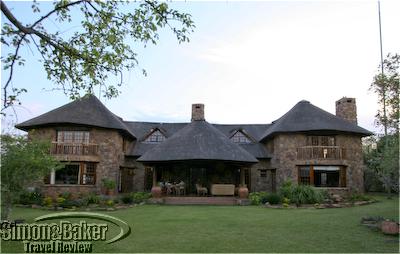
A view from the gardens of the back of Jembisa
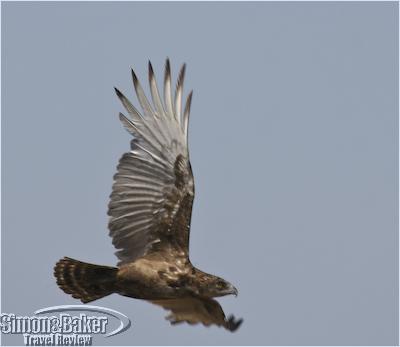
A predator with wings
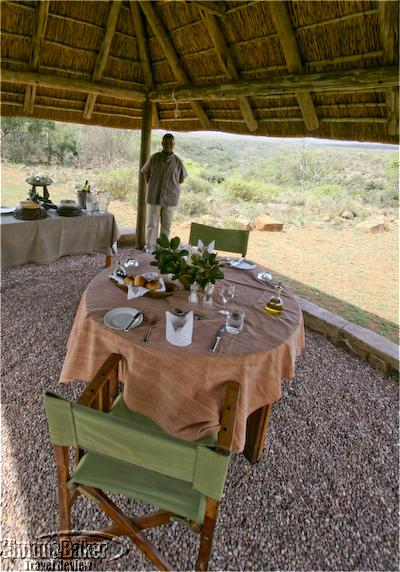
A tasty lunch with a bush view at Jembisa
Jembisa, a private rental home with staff within a bush reserve, is in South Africa’s Waterberg region a short drive from Johannesburg. During our team’s stay at the former family home they focused on the charms, large and small, of bush living. They spent their days relaxing in the comfortable six-bedroom exclusive use house, playing with one of three resident dogs, going for a stroll, enjoying a home cooked meal made by local staff and exploring the plant and animal life in the area during guided game drives with their enthusiastic guide. Click here to read about our team’s impressions of Jembisa.
by Editor | May 17, 2010 | Accomodations, Ecotourism, New Articles
Article and photos by Josette King
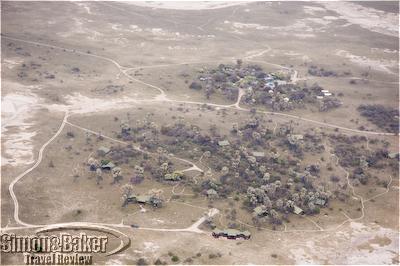
Jack's Camp was an oasis of luxury in the Kalahari
With my recent visit to Botswana came the opportunity to explore some of the many faces of the Kalahari Desert. Derived from the Setswana word kgalagadi usually interpreted as “the great thirst,” or “thirstland,” the Kalahari is a mantle of sand that covers roughly 70 percent of the country. My Kalahari experience began with a bush plane flight from Maun, the main gateway to Bostwana’s safari areas. For almost an hour, the plane droned on and the sun-baked emptiness below never seemed to change. Then suddenly the swirling horizon of dusty sandbars and gleaming salt pans was interrupted by an incongruous line of fan palm trees. “Jack’s Camp,” the pilot announced with a nudge in the direction of the palms.
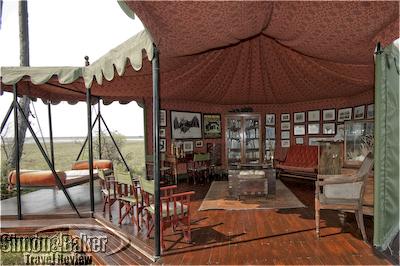
The library at Jack's Camp
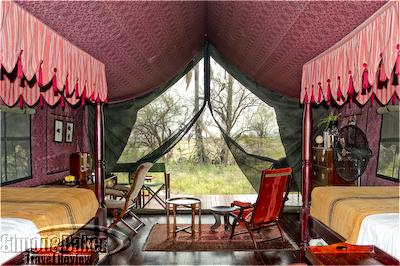
My tent had a view of the Makgadikgadi Salt Pans
Located in a remote oasis overlooking the Makgadikgadi Salt Pans, Jack’s Camp was a magical place reminiscent of the grand East African safaris camps of a bygone area. The spacious tents were decorated with antique furniture and oriental rugs, their interior draped with faded chintz and their en-suite bathrooms featuring indoor and outdoor showers with flawlessly polished copper fixtures. Service was commensurate with the elegance of the camp. But the superb accommodations and service were but a prelude to the outstanding quality and variety of activities provided by the expert guiding staff of Jack’s Camp.
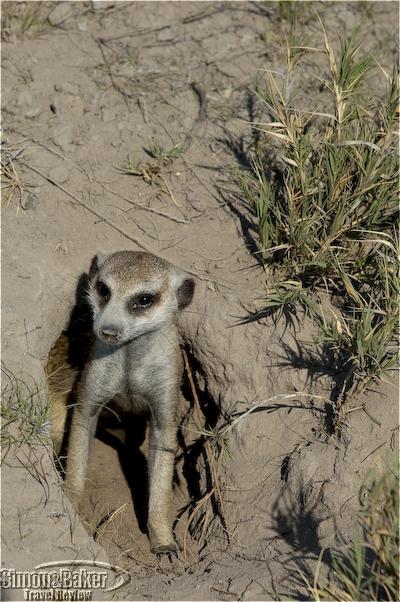
A meerkat emerges from its burrow

A nature walk with Cobra, a Zu/’hoasi bushman elder
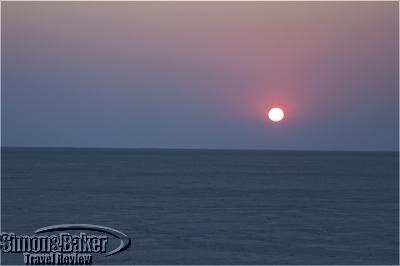
The sun sets over the Makgadikgadi Salt Pans
I spent a delightful morning standing among a colony of meerkats (although wild, these squirrel-sized mongooses were sufficiently habituated to humans that they were unconcerned by my presence). I marveled at the daily sight of hundreds of zebras and wildebeests arriving from the Boteti River to the west for their yearly migration to the Makgadikgadi Salt Pans. I went on a nature walk with a Zu/’hoasi bushman elder who showed me the plants that had ensured the survival of his ancestors for millennia. I rode a quad bike ride deep into the Pans to watch the sun set and the moon rise over their blistered infinity. Click here to read more about the many unique experiences of my stay at Jack’s Camp.




































